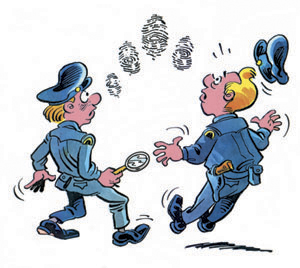dactylo-, dactyl-, dactylio-, -dactyl, -dactyla, -dactylia, -dactylic, -dactylism, -dactyloid, -dactylous, -dactyly
(Greek: finger, toe)
Dactylograde, toe walking, is not unusual in younger children who are just beginning to walk and otherwise growing and developing normally; however, toe walking after three years of age should be evaluated by a doctor.
2. In zoology, an animal that walks on its toes; such as, a cat, a lion, a wolf, etc.; distinguished from a plantigrade, which walks on the palm of the foot.Here are more details about the science of dactylography.
2. The permanent contraction of the fingers.
2. Talking" or communicating with the fingers and hands.
3. A method of communication used by deaf-mutes, involving symbolic expressions with the fingers and hands.
4. The study of fingerprints for purposes of identification: The following illustration provides evidence that dactylology indicates that a thief must be very large as shown by the size of the prints left by his fingers.
The use of dactylology can provide evidence from a crime scene that an important method of forensic science, or the use of technical methods to solve crimes, can be utilized to find out who committed them.

2. Dissolution of the bone of a finger.
3. The spontaneous dropping off of fingers or toes, seen in leprosy; and sometimes produced in utero (inside a woman's uterus or womb) when a hair firmly wrapped around a digit causes amputation.
Historically, it was not just a matter of using the whole finger, as some people do in our modern times; but it was more complicated in that every finger was utilized for its knuckle, two joints and three bones (one joint and two bones for the thumb) and all of them, on both hands, were used to count up to 9,999.
There are descriptions of the method from the Middle East, Asia, and other places. Paintings exist from more than four thousand years ago showing Egyptians counting in this way, and it was common in classical Greece and Rome.
2. Expressing language with the fingers.


